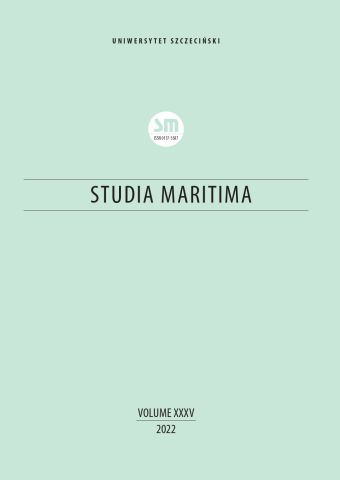






| Authors: |
Karol
Łopatecki

Faculty of History and International Relations University of Bialystok |
| Keywords: | Sweden in the 1st half of the 17th century Polish–Lithuanian Commonwealth Finns Swedes refugees in the early modern period spatial mobility estates in the Kingdom of Sweden Sigismund III Charles of Södermanland |
| Data publikacji całości: | 2022 |
| Page range: | 12 (271-282) |
| 1. | Achremczyk, Stanisław. “Spory i konflikty szlachty malborskiej w drugiej połowie XVII wieku.” Komunikaty Mazursko–Warmińskie 4 (2010): 417–434. |
| 2. | Hakanen, Marko, and Koskinen Ulla, “The Gentle Art of Counselling Monarchs (1560–1655).” In: Petri Karonen, and Marko Hakanen, eds. Personal Agency at the Swedish Age of Greatness 1560–1720, 47–82. Helsinki: Finnish Literature Society. |
| 3. | Kazakou, Aliaksandr. “Muscovites among the Courtiers of the Lithuanian Grand Duke Sigismund the Old. Evidence from the Census of 1509.” In: The Fifth International Congress of Belarusian Studies. Working Papers, 63–66. Vol. 5. Kaunas: Vytautas Magnus University Press, 2016. |
| 4. | Kopiczko, Andrzej. “Warmińska kapituła katedralna. Zarys dziejów.” Studia Elbląskie 19 (2018): 11–27. |
| 5. | Krawczuk, Wojciech, ed. Slaktarebenck czyli Krwawe jatki księcia Karola Sudermańskiego. Kraków: Historia Iagellonica, 2017. |
| 6. | Krawczuk, Wojciech. Wierni królowi. Szwedzi i Finowie na uchodźstwie w Rzeczypospolitej Obojga Narodów, w pierwszej połowie XVII wieku. Kraków: Historia Iagellonica, 2019. |
| 7. | Krawczuk, Wojciech, ed. Protokół i regesty kancelarii szwedzkiej ekspedycji niemieckiej króla Zygmunta III z lat 1597–1600. Riksregistraturet vol. 87 Riksarkivet w Sztokholmie. Kraków: Historia Iagellonica, 2020. |
| 8. | Michalewicz, Jerzy. “Dwór szwedzki Zygmunta III w latach 1587–1600.” Odrodzenie i Reformacja w Polsce 11 (1986): 161–180. |
| 9. | Plewczyński, Marek. “Bitwa pod Byczyną 24 I 1588.” Studia i Materiały do Historii Wojskowości 17 (1971), 1: 125–170. |
| 10. | Samuelson, Jan. Aristokrat eller förädlad bonde?: det svenska frälsets ekonomi, politik och sociala förbindelser under tiden 1523–1611. Lund: Lund Univ Press, 1993. |
| 11. | Stopka, Krzysztof. Ormianie w Polsce dawnej i dzisiejszej. Kraków: Księgarnia Akademicka, 2000. |
| 12. | Szpaczyński, Przemysław. Mocarstwowe dążenia Zygmunta III w latach 1587–1618. Kraków: Universitas, 2013. |
| 13. | Tollet, Daniel. Historia Żydów w Polsce od XVI wieku do rozbiorów. Translated by Dorota Zamoyska. Warszawa: Wydawnictwo Naukowe PWN, 1999. |
| 14. | Tyszkiewicz, Jan. Tatarzy na Litwie i w Polsce: Studia z dziejów XIII–XVIII w. Warszawa: Państwowe Wydawnictwo Naukowe, 1989. |
| 15. | Worthington, David. “« Unfinished work and damaged materials»: historians and the Scots in the Commonwealth of Poland–Lithuania (1569–1795).” Immigrants & Minorities 34 (2016), 3: 276–296. |